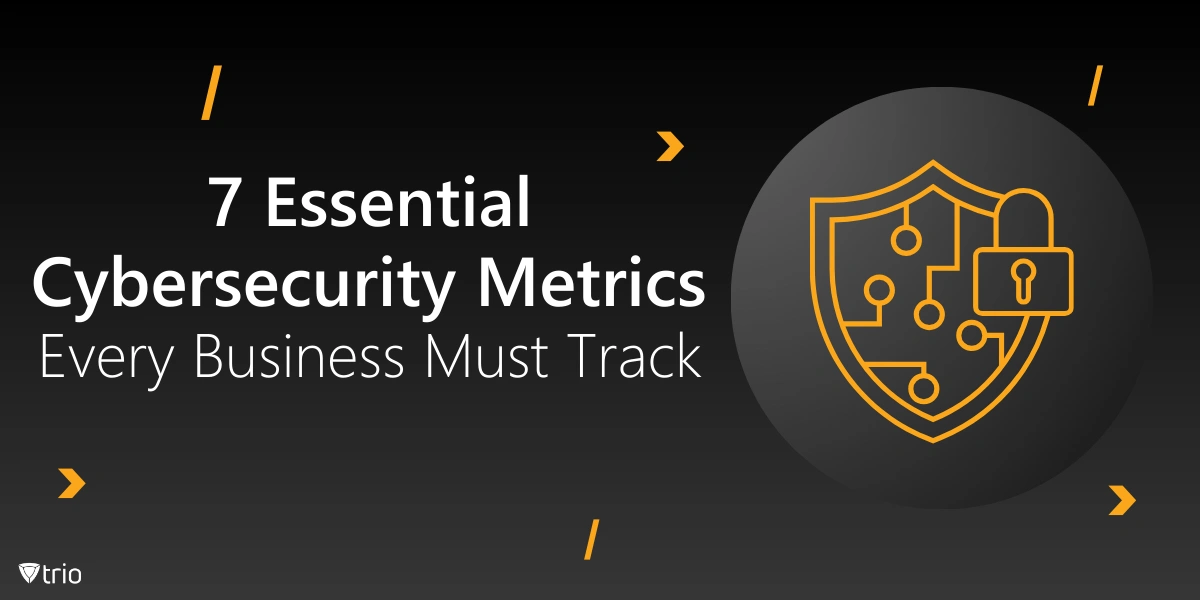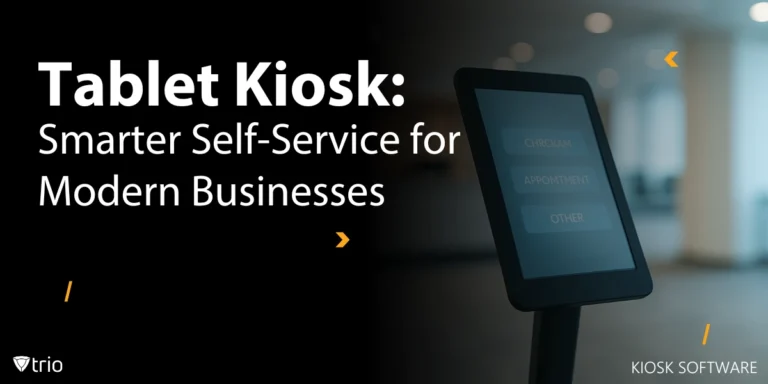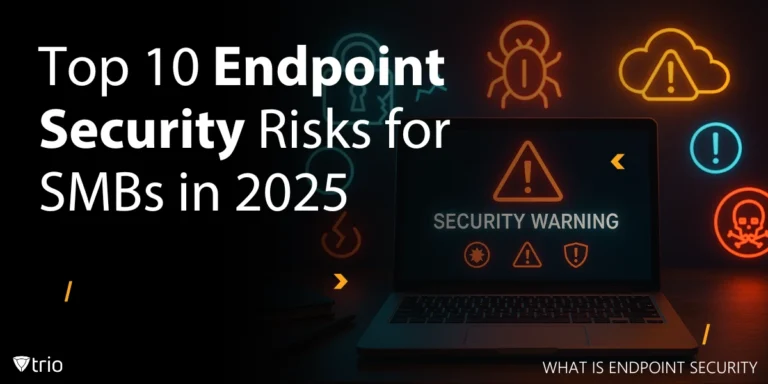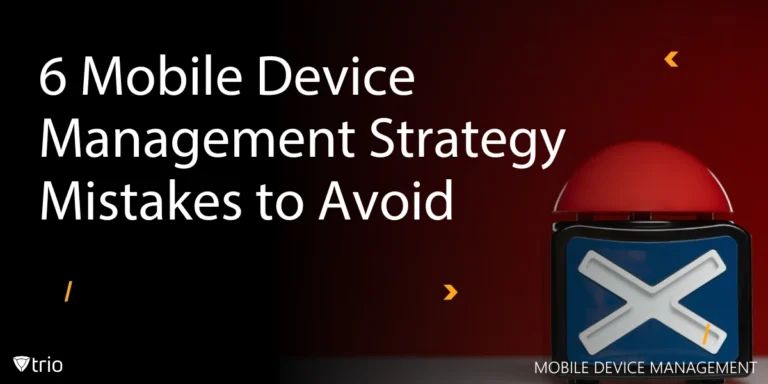Given the constantly evolving nature of cyber threats, tracking cybersecurity metrics and measures is essential for maintaining a robust cybersecurity posture within any company. By understanding these metrics, businesses can identify gaps in vulnerability management, assess their exposure to cyber risk, and take proactive steps to defend against threats, keeping systems secure and resilient.
What Are Metrics in Cybersecurity?
Cybersecurity metrics are key indicators that provide insight into a business's security posture. They are actually your cybersecurity performance metrics—tracking the health and resilience of your digital environment. These metrics aren’t just numbers on a dashboard; they are tools that reveal weak points and highlight trends that need attention.
So, what are some cybersecurity metrics examples? It could be anything from the number of thwarted phishing attempts to time taken to respond to an incident. These security measurements allow businesses to understand their defenses and identify areas that require improvement. They’re your first line of cyber defense.

KPIs vs. KRIs: What’s the Difference?
In the field of cybersecurity metrics, two key terms you'll frequently encounter are KPIs (Key Performance Indicators) and KRIs (Key Risk Indicators). Understanding both is crucial for building a strong security strategy.
Key performance indicators (KPIs) in cybersecurity are measurements that track your security's effectiveness. Think of them as the bridge between your cybersecurity metrics and KPIs—things like patching time, compliance rates, or detection accuracy. These metrics highlight how well your security practices are performing.
KRIs (Key Risk Indicators) are slightly different. They focus on risk exposure and help pinpoint potential vulnerabilities before they become threats. For instance, the frequency of failed logins or number of unpatched devices in your network could signal security gaps. Tracking KRIs means staying ahead of emerging risks.
Measuring cybersecurity effectively requires blending KPIs, KRIs, and regular security audits. Audit performance metrics in cybersecurity reveal how your security controls are functioning, while KPIs and KRIs gauge the efficiency and risks within your security program. Together, these metrics provide a clear picture of your overall security posture.
The 7 Essential Cybersecurity Metrics Every Business Needs
To keep both technical stakeholders and the broader team informed, companies should track key cybersecurity metrics. These metrics provide a roadmap to understanding security strengths and weaknesses.
-
Incident Response Time (IRT)
This measures how fast your security team responds to incidents. The quicker the time to contain, the better. An efficient cybersecurity incident response plan allows your team to quickly isolate and mitigate threats, preventing potential damage.
-
Mean Time to Detect (MTTD) and Mean Time to Resolve (MTTR)
The Mean Time to Detect (MTTD) reflects how swiftly your team can identify threats. Tools like intrusion detection systems are related to this. Meanwhile, MTTR evaluates how fast those detected threats are resolved to keep damage and downtime to a minimum.
-
Threat Detection Rate vs. Successful Breaches
This metric compares the volume of detected cyber threats to actual breaches. Ideally, your threat detection rate should far exceed the rate of successful data breaches, indicating that your defense mechanisms are effectively identifying and stopping threats before they cause harm.
-
Patch Management Efficiency
Timely patch management is another step to close vulnerabilities before they become exploit points. This metric assesses how quickly software patches are applied, minimizing attack vectors and ensuring systems are kept secure from emerging threats.
-
Security Awareness Training Effectiveness
The human firewall is your greatest defense. Effective security awareness training is evident when phishing attacks are avoided, and employees adhere to security policies. Track the number of successful training outcomes to measure how well your team understands and prevents security risks.

-
Vulnerability Scanning and Remediation Rate
Regular vulnerability scans are essential to identify and address cybersecurity risks. This metric measures how often scans occur and the speed of remediation for identified threats to ensure your systems are not left exposed to known vulnerabilities.
-
Access Control Effectiveness
Effective access management means ensuring only the right people have access to sensitive information. Track unauthorized access attempts and privilege misuse to assess the effectiveness of your access control and adjust policies to maintain tight control over data.
How to Measure Cybersecurity Culture?
Creating a security-conscious culture goes beyond installing firewalls and encryption. Implementing cybersecurity metrics best practices helps you understand how your team perceives and practices security daily. Are employees reporting phishing attempts? How promptly are they following incident response procedures? These metrics provide insight into how ingrained cybersecurity is within your team.
Incorporating disaster recovery drills into your culture measurement is a practical way to gauge the strength of your organization's cybersecurity culture. Are teams confident and efficient in these drills? Analyzing their response and recovery times during these exercises can reveal gaps in awareness and readiness and allow you to strengthen your overall security posture before an actual incident strikes.
How MDM and Trio Fit Into the Picture
Mobile Device Management (MDM) is key to securing mobile endpoints—often the weakest links in cybersecurity. Trio, our MDM solution, provides the tools needed to manage access, monitor threats, and enforce security policies across devices. This directly supports metrics like incident response time, access control, and patch management efficiency.
Trio makes it easier to track and improve your cybersecurity metrics by offering real-time insights and automated actions to keep data safe. Want to see how Trio can help boost your security program? Try our free demo today and strengthen your mobile defenses.
Conclusion: Strengthen Your Security with the Right Metrics
Tracking the right cybersecurity metrics empowers your business to strengthen its defenses. By focusing on incident response, detection times, threat mitigation, and access control, you'll not only reduce risks but also improve overall security. Start measuring these essential metrics today to bolster your cyber defense and stay ahead.
Get Ahead of the Curve
Every organization today needs a solution to automate time-consuming tasks and strengthen security.
Without the right tools, manual processes drain resources and leave gaps in protection. Trio MDM is designed to solve this problem, automating key tasks, boosting security, and ensuring compliance with ease.
Don't let inefficiencies hold you back. Learn how Trio MDM can revolutionize your IT operations or request a free trial today!





